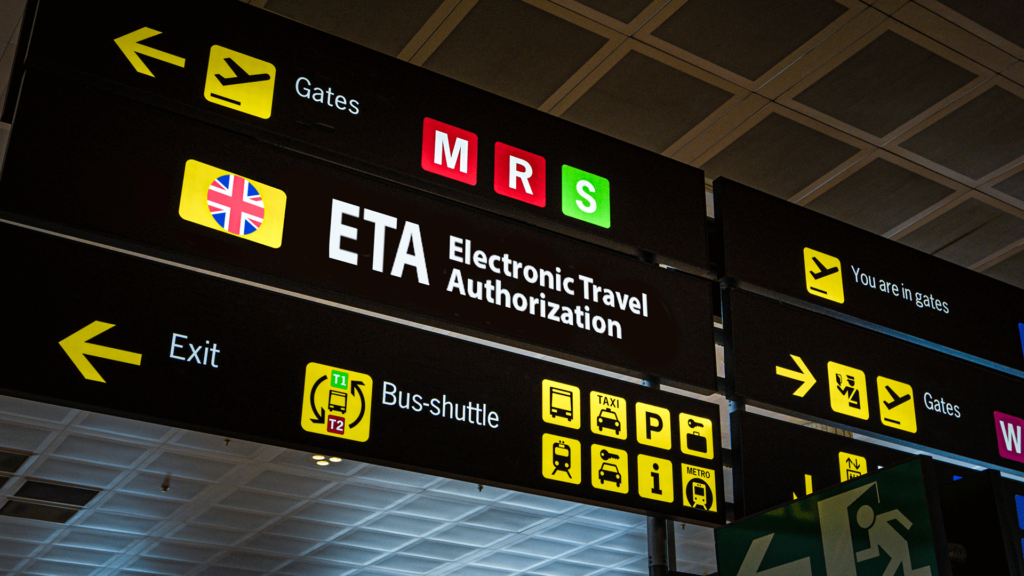Scroll down to find guidance on:
- Coronavirus Job Retention Scheme
- Requiring workers to take annual leave
- Online Isolation Notes
- Statutory Sick Pay (SSP)
- Parental absence with schools shut down
- Allowances
- Employees on maternity
- Homeworking
- Data protection
- Travel
- Requiring employees to work reduced hours or take time off work
- Lay off & statutory guarantee pay
- Redundancies
- Withdrawing an offer of employment
- Provisions for self-employed
Coronavirus Job Retention Scheme
On 20 March 2020, the UK Government announced that all UK employers will be able to access support to cover 80% of the wage costs of employees that would otherwise have been made redundant or laid off, up to a cap of £2,500 per calendar month.
This is not counted as “access to public funds” and therefore employees who are in the UK working on all types of visa will be eligible.
The scheme is also open to employees who transferred to a new employer after 19 March 2020 if either the TUPE or PAYE business succession roles apply to the change. Where a group of companies have multiple PAYE arrangements and all employees were transferred from these into a new consolidated PAYE arrangement after 19 March 2020, the new arrangement will be eligible for the scheme.
The maximum level of grant for employer pension contributions under this scheme is in line with the minimum automatic enrollment employer contribution of 3% on qualifying earnings.
Employees can take part in voluntary work, if such work does not provide services to or generate revenue for the employers that have furloughed them or to a linked or associated organisation.
Initially the CJRS was set to run for four months starting on 1 of March. It has now been extended and will continue in its current form until the end of July. From August, employers currently using the scheme will have more flexibility to bring their furloughed employees back to work part time whilst still receiving support from the scheme.
This will run for three months from August through to the 31 October. Employers will be asked to pay a percentage towards the salaries of their furloughed staff. The employer payments will substitute the contribution the government is currently making, ensuring that staff continue to receive 80% of their salary, up to £2,500 a month The percentages that employers are now expected to pay has been confirmed.
For June and July, the government will pay 80% of wages up to a cap of £2,500 for the hours the employee is on furlough, as well as employer National Insurance Contributions (ER NICS) and pension contributions for the hours the employee is on furlough. Employers will have to pay employees for the hours they work. Please note the first time you will be able to make claims for days in July will be 1 July, you cannot claim for periods in July before this point. 31 July is the last day that you can submit claims for periods ending on or before 30 June.
For August, the government will pay 80% of wages up to a cap of £2,500 for the hours an employee is on furlough and employers will pay ER NICs and pension contributions for the hours the employee is on furlough.
For September, the government will pay 70% of wages up to a cap of £2,187.50 for the hours the employee is on furlough. Employers will pay ER NICs and pension contributions and top up employees’ wages to ensure they receive 80% of their wages up to a cap of £2,500, for time they are furloughed.
For October, the government will pay 60% of wages up to a cap of £1,875 for the hours the employee is on furlough. Employers will pay ER NICs and pension contributions and top up employees’ wages to ensure they receive 80% of their wages up to a cap of £2,500, for time they are furloughed.
Annual leave
HMRC has provided updated guidance on taking holiday whilst furloughed. The updated guidance says that employees can take annual leave while on furlough, with the employer having to ‘top up’ to the 80% furlough pay to 100 % of normal pay. Employers can agree to vary an employee’s holiday pay entitlement.
Employers may wish to require workers take a certain amount of annual leave to prevent a backlog of accrued holiday once the workforce returns. In the absence of a contractual clause providing an express right, employers can require workers to take their statutory entitlement to annual leave on specific days as long as workers are given the correct notice.
Employers must give workers notice of at least twice the period of leave that they are being required to take. The notice from the employer must also specify the days on which the workers will be required to take leave.
Employers should refer to their own holiday policies to decide how and when any leave entitlement above the statutory minimum can be taken.
Online Isolation Notes
Isolation notes are now available on the NHS website and NHS 111 online, via this online system. For the first seven days off work, employees can self-certify any evidence that their employer might request. After seven days, the employer can ask for evidence of sickness absence. The isolation notes can be used as evidence for employees to certify that they have COVID-19 symptoms or are living with a relative who has them.
Health and Social Secretary, Matt Hancock, has explained that if an employee does not have an email address, they can have their isolation note sent to a trusted family member, friend, or their employer directly. Mr. Hancock also explained that the service can also be used to generate an isolation note on behalf of someone else.
Statutory Sick Pay (SSP)
If an employee is in one of the following situations and cannot work from home, they will now be regarded as being incapable of working, and so will be entitled to SSP for up to two weeks provided they meet the qualifying conditions e.g. average weekly earnings above £118.
- has been diagnosed with COVID-19
- shows COVID-19-related symptoms
- has been required to be placed in quarantine/ self-isolation (e.g. by a GP or public health)
- someone in their household shows COVID-19-related symptoms
The Government has also confirmed that:
- SSP will be available to employees from day 1 of their sickness absence instead of from day 4. This applies to people who have tested positive for COVID-19 as well as employees self-isolating with mild symptoms.
- From 26 May, businesses with less than 250 employees will be eligible for a full refund of up to 14 days SSP which has been paid to employees off work for these Covid-19 related reasons.
- SSP increased from £94.25 to £95.85 on 6 April 2020.
- SSP is currently not available to zero-hours workers or to the self-employed.
- Employees who become ill whilst on furlough can be moved onto SSP or can remain on furlough. If an employee moves onto SSP, employers can no longer claim the furloughed salary rate. If a sick employee on furlough remains on furlough, employers can continue to claim their costs back through the furlough scheme.
Employers with less than 250 employees who want to reclaim from the government the SSP they have paid because of coronavirus will need to be able to confirm that:
- The employee in question was off work because they either had coronavirus, were self-isolating or shielding because of coronavirus.
- The employer PAYE payroll scheme started on or before 28 February 2020
- The employer had fewer than 250 employees on 28 February 2020.
Any period of sickness that employers wish to reclaim must have started on or after:
- 13 March 2020 if the employee had coronavirus or was self-isolating because of coronavirus
- 16 April 2020 if the employee was shielding because of coronavirus
Parental absence with schools shut down
All schools in the UK have been closed since Friday 19 March 2020. Where possible, employers should encourage employees to work from home. Where this is not possible, employees have the following options:
1.Parental leave:
- This is available to birth and adoptive parents.
- All employees are entitled to take 18 weeks’ unpaid parental leave for each child for the purposes of caring for that child.
- This can be done at any point up to the child’s 18th
- Once that leave period has expired, the employee will have the right to return to the same job.
- Your policies may provide for enhanced family friendly provisions and these should also be considered.
2.Time off for dependents:
- Employees have the right to take a ‘reasonable’ amount of time off work to deal with particular situations affecting their dependents.
- Applies to all employees, irrespective of length of service. Workers and the self-employed are excluded.
- This is unpaid.
- This right does not entitle an employee to take time off in order to provide care for a child throughout the duration of a school shut down but only as much time as is required to provide necessary temporary assistance, and to make longer-term arrangements for childcare e.g. by employing a temporary carer or making arrangements with friends or relatives.
3.Use annual leave
4.Furlough
The Government guidance makes no reference to how employers should decide which employees, or groups of employees to furlough. However, as part of a fair selection process, employers may decide that that parents who cannot work due to childcare commitments should be one of the groups to furlough. These employees would need to be brought back onto full pay and then placed on furlough.
Employees who elected to take unpaid leave to take care of their children may therefore be able to ask their employers to furlough them instead.
Allowances
Benefits
Benefits such as pensions, health insurance or gym membership (assuming that gyms reopen whilst staff are still furloughed under the Scheme) will need to be continued for furloughed employees as they did pre-furloughing, unless you have agreed to temporarily or permanently suspend these benefits with the furloughed employee(s).
It is unlikely that employers will be able to claim the costs of providing those benefits to employees back from the Government under the Scheme, except for pension contributions.
Where possible, employers should consider and check with their insurance providers what salary would be used in the event of a claim, the 80%, or the pre-furlough salary.
Car/fuel/housing allowances
In relation to benefits such as car/housing/fuel allowances, the position is less clear.
Will a car allowance form part of the 80% calculation? Historic (non-binding) HMRC guidance considers car allowances to amount to remuneration as they have a transferable cash value. Such benefits can arguably therefore be considered as part and parcel of the employee’s salary. Additionally, car allowances can be taken into account when considering an employee’s salary for purposes of calculating statutory maternity pay.
The practical approach would be to proceed with caution and assume that such allowances will continue during furlough as part of an employee’s salary and will therefore form part of the 80% calculation.
However, employers should note that, in the event of HMRC disagreeing with this approach, these sums may not be recoverable. Employers will need to balance this risk against the risk of removing these allowances and being in breach of the contract of employment.
National Minimum Wage and National Living Wage
The hourly rates for the National Minimum Wage (NMW) and the National Living Wage (NLW) increased on 1 April 2020. The hourly rates of pay depend on your age and whether you are an apprentice. You must be at least school leaving age to be eligible for the NMW, and 25 or over to get the NLW.
The new NMW and NLW rates are as follows:
| Previous rate | Current rate | Increase | |
| NLW | £8.21 | £8.72 | 6.2% |
| 21-24 year old rate | £7.70 | £8.20 | 6.5% |
| 18-20 year old rate | £6.15 | £6.45 | 4.9% |
| 16-17 year old rate | £4.35 | £4.55 | 4.6% |
| Apprentice rate | £3.90 | £4.15 | 6.4% |
These increases should not affect those on furlough. This is because the furlough pay calculation is based on either your salary over the last 12 months or your equivalent month from last year. Therefore, the furlough pay for employees on the NMW will be calculated in accordance with the NMW as it was prior to 1 April 2020.
However, if an employer provides a minimum wage employee with work after 1 April they must comply with the increase to the BMW. For more guidance on the minimum and living wage please follow this link to the UK Government website.
Employees on maternity
Statutory maternity pay will stay the same as it was before the COVID-19 outbreak. Employees must take two weeks maternity leave after giving birth or 4 weeks in a factory or workshop for health and safety reasons.
Statutory maternity pay will be calculated as 90% of their average weekly salary in the first 6 weeks, followed by 33 weeks of pay paid at 90% of the employee’s weekly earnings or the statutory flat rate, whichever is lower. Currently the statutory flat rate is £148.68 however this is due to rise in April to £151.20. If you are an employer who ‘tops up’ maternity pay so that your employee is eligible for an enhanced contractual maternity pay’ then you can claim your contribution back through the job retention scheme.
The Government has confirmed that furloughed workers planning to take paid parental or adoption leave will be entitled to pay based on their usual earnings rather than the furloughed pay rate.
These rules also apply to contractual adoption pay, paternity pay and shared parental pay.
Homeworking
If employees can work from home, then they should be paid their regular salary, and receive their normal benefits.
Data protection
Several measures can be put in place to avoid security and data breaches when working from home. These measures include but are not limited to using a private and secure Wi-Fi connection, using a an encrypted device to store personal and other confidential information, storing paper documentation in a locked cabinet when not in use and ensuring that business telephone or video calls take place in a quiet room away from family members or residents.
In response to COVID-19, ICO have released guidance regarding data protection. Full information can be found on their website here, but in summary:
- The ICO will not extend statutory timescales for information rights requests but will inform the communications channels that they may experience understandable delays when making information rights requests during the pandemic.
- The ICO understands that resources will be diverted away from usual compliance or information governance work. ICO will not penalize organisations that they know will need to adapt or prioritise other areas during this extraordinary period.
- As an employer you have a duty to protect your employee’s health. It is reasonable to ask people to tell you if they have COVID 19 symptoms or have visited a particular country where COVID 19 is prevalent.
- You should keep staff informed about potential cases of coronavirus in your organization but remember do not give more details than is necessary; you do not necessarily need to provide the name of an employee.
Travel
The Government has recommended that the public avoid all non-essential travel, both inside and outside of the country. If international travel is necessary for your business operations, then the Government recommends the following advice.
- Contact your travel provider/ travel company to make sure you can still travel.
- Get travel insurance and check that you are covered, contact your insurer if you are unsure.
- Make sure you can access money for unexpected emergencies and be prepared for logistical and financial disruption.
- Be prepared to follow the advice of local authorities abroad, including quarantine for your own protection.
Requiring employees to work reduced hours or take time off work
Without agreement from the employee or an express contractual term, forcing employees to take time off when they have not been diagnosed with COVID-19, or have been told that they do not meet the conditions for self-isolation, will mean that they are entitled to full pay. Failure to do so could result in the employee claiming unlawful deductions from wages or, in a worst-case scenario, resigning and claiming constructive unfair dismissal.
Discussing matters with affected employees could result in them agreeing to work reduced hours or agreeing to a temporary lay-off, although they are now less likely to do so given the Government’s announcement regarding the Coronavirus Job Retention Scheme.
The Coronavirus Job Retention Scheme will be backdated to 1 March 2020. Employers who have given employees notice of redundancy on or after 1 March, or placed them on unpaid leave, could therefore ask these employees to agree to be placed onto furlough leave instead.
Lay off & statutory guarantee pay
‘Laying off’ employees means that you provide them with no work (and no pay) for a period while retaining them as employees.
‘Short-time working’ means providing employees with less work (and less pay) for a period while retaining them as employees. Unlike dismissal, it is a temporary solution to the problem of no or less work.
Legally, you can only lay-off employees, or enforce short-time working, if:
- the employee’s contract expressly gives you this right
- you have agreed this right with a trade union, for example in a collective agreement
- you can show that you have acquired the right over time through “custom and practice”
- the employee agrees to it by way of a consensual change to their contract
Employees who have been employed continuously for one month may be entitled to receive statutory guarantee pay (SGP) during lay off or short-time working, subject to certain other conditions also being met. The entitlement is £29 a day for 5 days in any 3-month period – therefore a maximum of £145.
Employees do not need to be on lay-off or short-time working to receive an SGP. If they have been asked to reduce or cease working their normal working hours for a temporary period, they may be able to claim SGP.
Redundancies
If employees don’t agree to a lay-off or short-time working, you may feel it necessary to consider redundancies. COVID-19 has certainly, for many employers, resulted in there being a reduced requirement for employees to carry out work of a particular kind. We can advise separately on undertaking redundancies, and possible alternatives.
Note: If an employee has at least 2 years’ service and has been placed on lay-off or short time working for a period of 4 consecutive weeks, they can request their statutory redundancy entitlement.
Withdrawing an offer of employment
There are many reasons why employers sometimes wish to withdraw offers of employment. One of the effects of COVID-19 is that businesses may find that their staffing requirements have significantly changed and in many cases, to the extent that there is little or no work for a potential new employee to do, and that offers of employment are now having to be withdrawn.
Unsurprisingly, disappointed applicants often allege that the employer’s reason for withdrawing the job offer was unlawful (for example, that it was an act of discrimination). However, this is much more unlikely to be the case here, given the well-publicised effects of COVID-19 on businesses across the UK. You should nonetheless document your reasons for withdrawing an offer and retain documentary evidence that supports these.
An individual may have a claim for breach of contract if the offer is withdrawn after it has been accepted, especially if any pre-conditions have been met, even if they have not yet started employment. Businesses may feel it prudent in these circumstances to pay the employee the notice that they would have been entitled to under their contract so as to avoid any ensuing claims. If the contract contains a probationary period, this may be as little as one weeks’ notice pay.
Provisions for self-employed individuals
The “Coronavirus Self-employment Income Support Scheme” (“the Scheme”) is open to those self-employed individuals or partnerships who have suffered a loss of income. You can read our full blog on the topic here, and here’s a summary of help open to self-employed people is now as follows:
- The Scheme represents a taxable grant will be paid as a lump sum worth up to 80% of their profits up to a cap of £2,500 per month – these will be available in June;
- The Minimum Income Floor in Universal Credit will be suspended, and therefore self-employed people can access Universal Credit at a rate equivalent to Statutory Sick Pay for employees (circa £94.24 per week);
- The next self-assessment payments will be deferred to January 2021;
- Self-employed people will also be able to access the Coronavirus Business Interruption Loan Scheme, where applicants can obtain loans (of up to £1.2 million) with a guarantee of 80% on each loan provided by the Government; and
- “Time to pay” arrangements with HMRC where payments of outstanding tax can be agreed to be deferred for an agreed period of time, and a waiver of late payment penalties if the delay in payment is as a result of difficulties in contacting HMRC due to the COVID-19 outbreak.
The Scheme itself only applies to those who were trading in the last financial year, are still trading now, and plan to continue doing so. Further, more than 50% of a person’s income must come from self-employment for them to be eligible. The Scheme is only available for those with an average trading profit of less than £50,000. The self-employed individual’s trading profit is assessed over three years (or for the duration of their trading if less).
For any self-employed individuals who have started up this year and do not have a full year of accounts, they will not be eligible for assistance from the Scheme.




